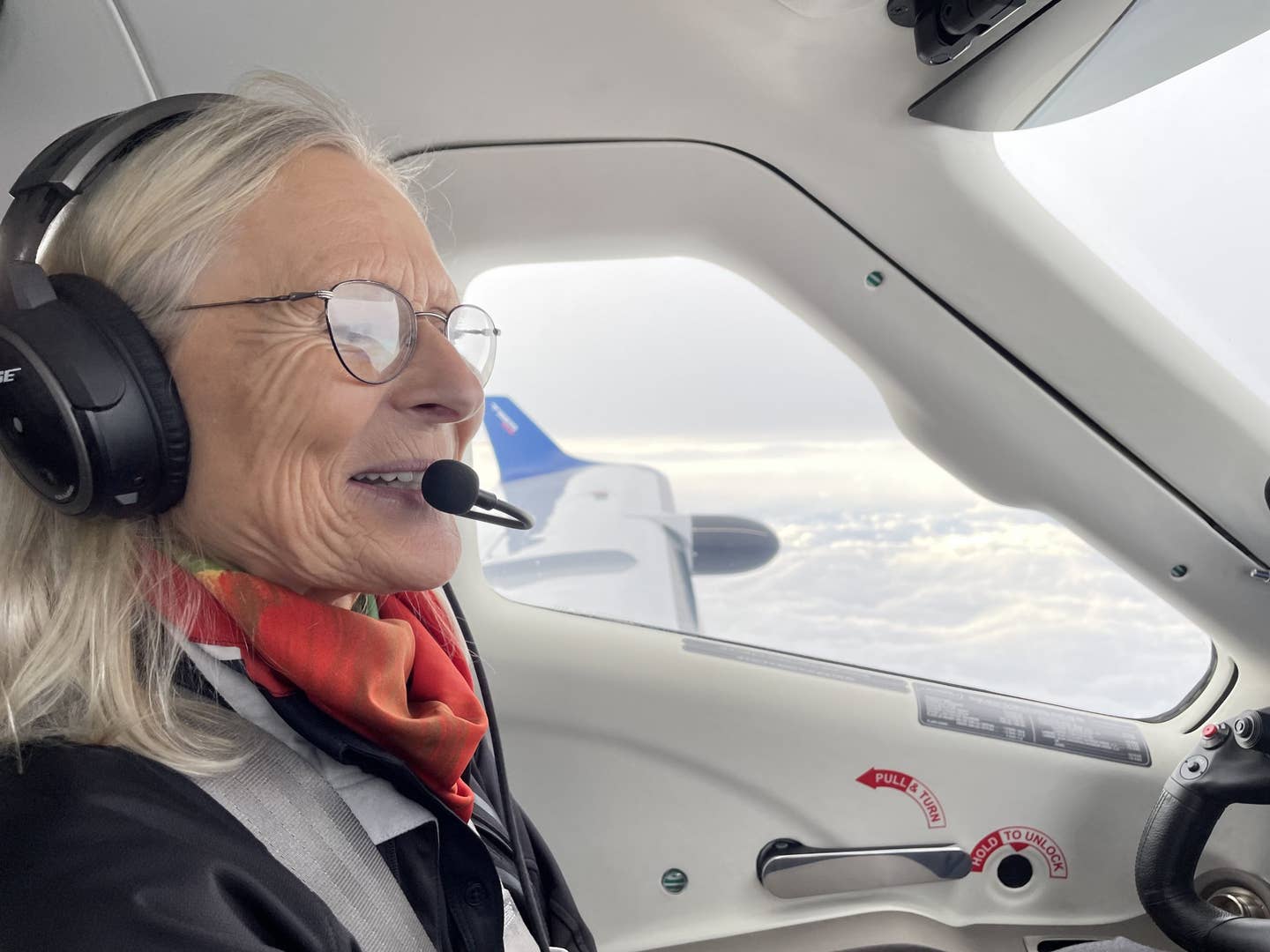For a Ferry Pilot, Routine Is Good
What does it take to make a long career out of ferrying airplanes? Editor-in-Chief Julie Boatman flies with Margrit Waltz.

Margrit Waltz says routine helps her know when something is out of place. Credit: Julie Boatman
“If the flight is routine, that’s the way I want it.”
Pilot Margrit Waltz has been ferrying airplanes—many of them single-engine piston mounts—for four decades. Her attention to detail—and the relationships she’s built along the way—are testimony to her success in this very specific mission.
She owes a critical part of that success to the development of routines. They give a baseline to flight operations, and let a pilot know when some element is out of place, nonstandard, abnormal, before a truly alarming circumstance arises. Boring is good.
The routines are borne from knowing “her airplane,” the TBM series, but also the route, the FBOs, the people, the procedures, and the weather patterns at various times of the year. She’s flown in every season, so this mid-November trip is not unusual.
And she knows that Adrienne Foster at Far North Aviation in Wick, Scotland, will be there ready with a cup of tea and a selection of KitKats.
“That’s my routine, too,” Waltz told me during one of our preparatory calls.
When we arrived there, the KitKat was white chocolate, and the tea came with milk and sugar, by the way—a routine I could get used to.
A Special Pilot
“She is so special because she has been associated with the TBM since the beginning of the story,” said Philippe de Segovia, director of TBM promotion for Daher’s Aircraft Division. “In ’91, at that time she made the first flight with our test pilot Christian Briand, Christian had never done a ferry flight and Margrit had never flown a TBM.” And the two of them flew the first one scheduled for delivery across the pond, serial number 6.
“She has the most knowledge, and she fell in love with the TBM, so we have a special connection,” said de Segovia.
Flying the 1400th TBM overall—the latest evolution in the TBM 940—just builds upon that base of knowledge for Waltz.
Setting Up the Flight Deck
You can learn a lot about a pilot by watching them work. Waltz learned to fly when she was 18, starting in 1975. Her first ferry flight was in 1977. More than 25,000 hours later, she’s spent a significant amount of time setting up a flight deck for an extended flight overwater—or over hostile terrain. It’s all about fuel, and daylight, and airport closing times.
After she starts up the airplane for the first time in Tarbes, France, she resets all of the fields across the top menu bar on the G3000’s middle and right-hand multifunction displays. She likes to keep the PFD in front of her relatively “clean.” Uncluttered.
The data presentation would come in most handy during our longest leg, from Keflavik, Iceland, to Iqaluit, Nunavut, Canada. Fuel onboard at destination, estimated time en route remaining, local time on arrival—all of immediate and continuous importance.
Also within reach from the climb out: a bag of Haribo gummies, the sour-cherry flavor you can only get in Austria, she said. Having used similar tactics to stay awake on long flights, I understood their value beyond the sugar rush they’d provide.
And we had another “friend” who joined us on the flight deck. A very special guest—a preflight gift to remind Waltz of those who care for and support her on her journeys. For this crossing, she placed on the glareshield a homemade St. Francis knit for her by a friend who is a flight attendant for TAP in Portugal. She takes a similar talisman on every trip.
It’s not really a superstition, she says, though most ferry pilots have them. Rather more like a companion to illuminate the way.
We’d grow quite fond of him over the course of two days’ flying, which I’ll share in next week’s wrap to the series.

Sign-up for newsletters & special offers!
Get the latest FLYING stories & special offers delivered directly to your inbox






